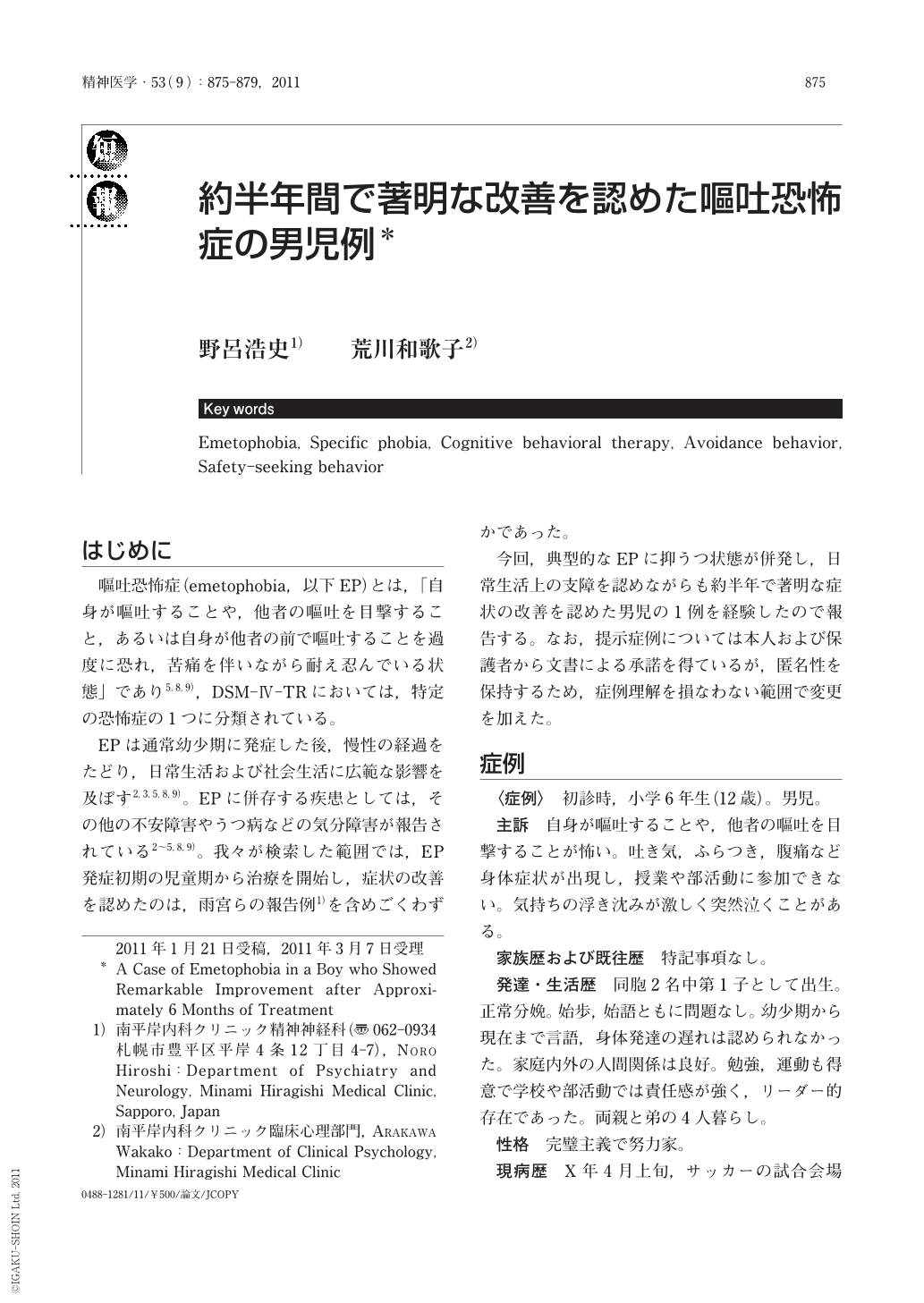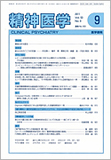Japanese
English
- 有料閲覧
- Abstract 文献概要
- 1ページ目 Look Inside
- 参考文献 Reference
はじめに
嘔吐恐怖症(emetophobia,以下EP)とは,「自身が嘔吐することや,他者の嘔吐を目撃すること,あるいは自身が他者の前で嘔吐することを過度に恐れ,苦痛を伴いながら耐え忍んでいる状態」であり5,8,9),DSM-Ⅳ-TRにおいては,特定の恐怖症の1つに分類されている。
EPは通常幼少期に発症した後,慢性の経過をたどり,日常生活および社会生活に広範な影響を及ぼす2,3,5,8,9)。EPに併存する疾患としては,その他の不安障害やうつ病などの気分障害が報告されている2~5,8,9)。我々が検索した範囲では,EP発症初期の児童期から治療を開始し,症状の改善を認めたのは,雨宮らの報告例1)を含めごくわずかであった。
今回,典型的なEPに抑うつ状態が併発し,日常生活上の支障を認めながらも約半年で著明な症状の改善を認めた男児の1例を経験したので報告する。なお,提示症例については本人および保護者から文書による承諾を得ているが,匿名性を保持するため,症例理解を損なわない範囲で変更を加えた。
Emetophobia (EP) is one of the specific phobias that develop during childhood, follow a chronic course and extensively disrupt the daily and social lives of affected individuals. Conditions known to commonly coexist with EP include various anxiety disorders and mood disorders, such as depressive disorder. The literature on EP includes only a limited number of case reports in which treatment was initiated at an early stage after the development of EP during childhood and led to improvement in symptoms. This report describes the case of a 12-year-old boy who developed typical EP complicated by secondary depressive symptoms, which interfered with his daily activities. The behavioral changes observed included avoidance and safety-seeking behavior that are associated with EP. The cognitive changes included decreased self-esteem, loss of self-confidence, and increased sensitivity to the evaluations and behavior of others. The patient was treated using cognitive behavioral therapy through interviews in which his mother was present and medication therapy, these treatments led to significant improvement in symptoms after a short period of approximately 6 months.

Copyright © 2011, Igaku-Shoin Ltd. All rights reserved.


